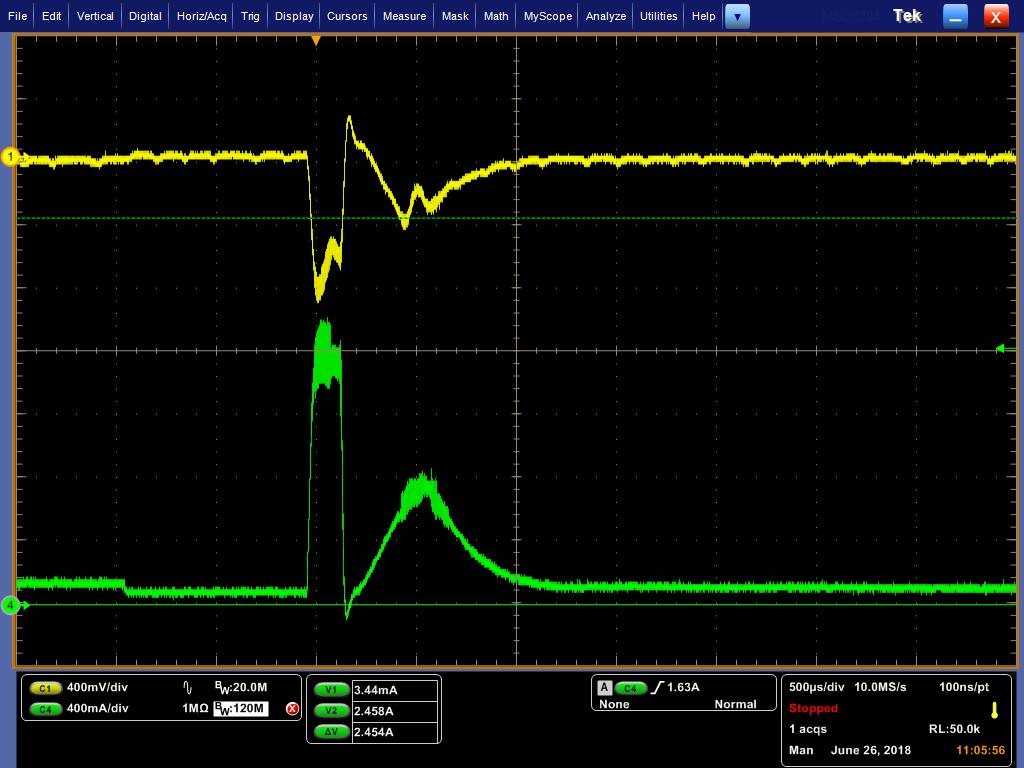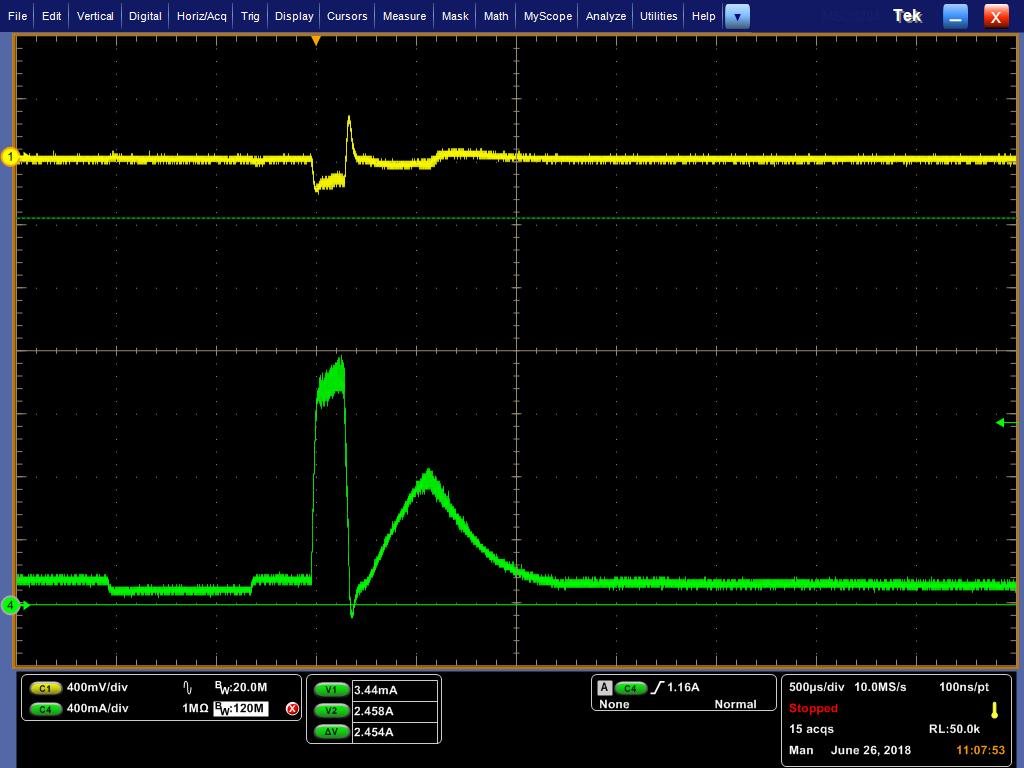Other Parts Discussed in Thread: TPS2553, TPS25221
The TPS63010 circuit provides power to our product which has an LED to provide lighting. When the LED is turned on there is a high inrush of current. After a high inrush of current this regulator goes into a bad state where the voltage drops to about 2.4V, The AC coupled ripple voltage, the input current and the output current are shown below when in this state.
Is there anything we can do to keep from going into this state?
Attached is the schematic of this part. I also tried removing D1, R7 & C20 and changed R9 to 97.6k to get a 3.3V output
One more thing of note is that we have a current limit switch TPS2553 feeding the input to the buck boost regulator.
See attached



